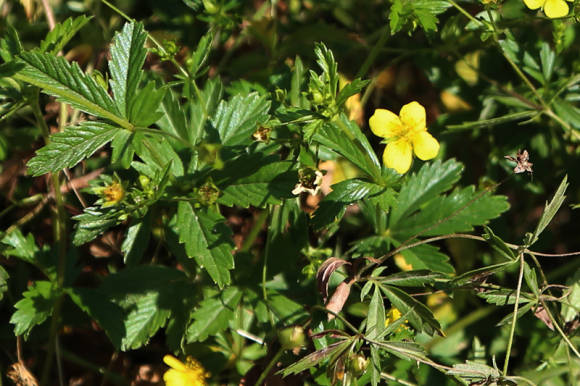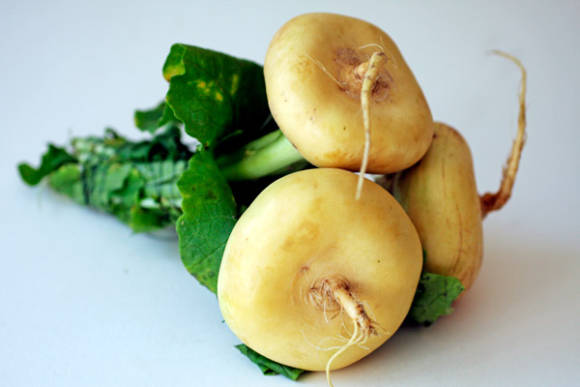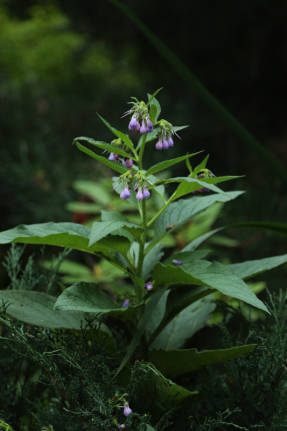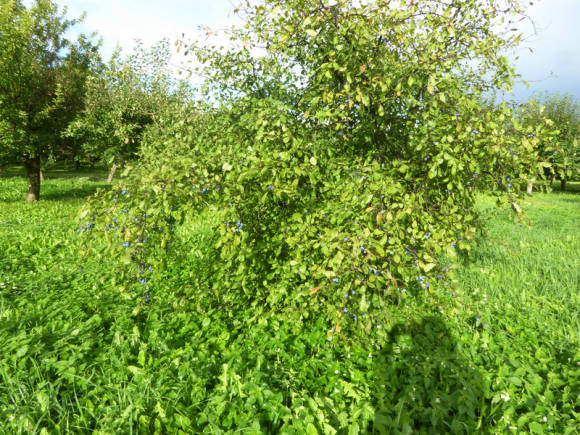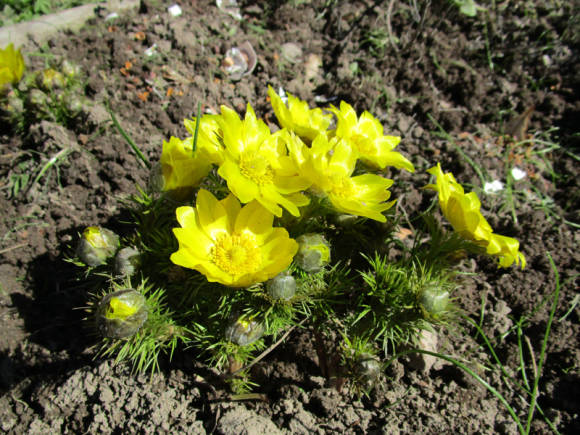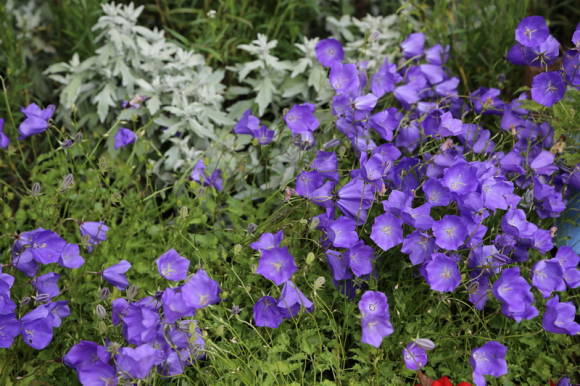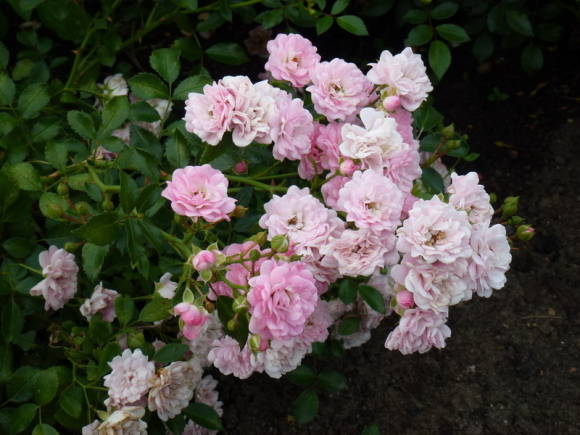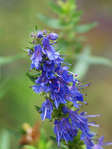Each plant I associate with a certain season. Snowdrops and snowdrops - with the very first timid beginning of spring and melting of snow, daffodils and tulips - with May holidays, fragrant bird cherry brushes - with the first spring frosts, lilacs - symbolize the end of spring. But violets are associated with blossoming, the peak of spring flowering, when meadows and forests are painted with luscious greens interspersed with bright colors of spring flowers.
 |
Violet, or viola(Viola) is a genus of plants widespread throughout the globe, which numbers about 400 species. The geography of the genus is very wide. Violets grow in areas with a temperate climate, and in the subtropics, and in the tropics of Europe, Asia, America, Africa, Australia, New Zealand. All representatives of the genus belong to low-growing plants with a typical flower shape resembling a butterfly. The leaves are most often collected in a rosette. There are no restrictions on the color of flowers, it covers the whole spectrum of colors of the rainbow.
Violets are one of the oldest horticultural crops. Already about 2,400 years ago, the ancient Greeks and Romans weaved violets into wreaths and garlands to decorate rooms on holidays and dinner parties.
One of the first in European monastic gardens was introduced into the culture of the fragrant violet (Viola odorata), then mountain violet(Viola montana)... The first mention of it in the botanical garden of the Scottish city of Edinburgh dates back to 1683. violet two-flowered(Viola biflora) botanists met in the 16th century, and only two centuries later the famous English florist F. Miller began to cultivate it.
Violets are known to modern gardeners primarily for their brightest representative - the Wittrock violet, or pansies (Viola x wittrockiana)... However, this species belongs to juveniles, although it has undeniable decorative advantages.
Recently, perennial violets have been gaining great popularity among flower growers.
All representatives of perennial species form beautiful low-growing bushes and have medium-sized flowers of a peculiar structure. It was for their structure that they received the name "stepmother" in Germany. The five petals of the flower symbolize a family of five: a stepmother, two relatives and two adopted daughters. The widest and most variegated petal is the stepmother, because she always gets the most beautiful outfits. If you turn the flower over, you can easily find that the stepmother is sitting on two green "chairs" - sepals. Next to her are her own daughters - narrower petals with variegated strokes at the base. Each of them is sitting on its own green chair. The topmost petals are stepdaughters. They are smaller and more modestly colored, they have to huddle together on the same chair.
The most common in gardens are the following types of perennial violets.
 |
Horned violet (Violacornuta) is a large-flowered representative of the genus Viola, because the size of a flower in this species reaches a diameter of 3.5 cm. Externally, the flowers are similar to the flowers of the violet of Wittrock. It has many cultivars with a wide variety of colors. By their nature, cultivars of horned violets belong to hybrids, in our conditions they outgrow and, as a rule, grow like juveniles, that is, they require periodic (once every 3-5 years) renewal.
The most stable cultivars of horned violets with white and light lilac, with speckled flowers are most widespread in gardens. Their compact bushes do not have a creeping rhizome, and therefore are not aggressors. Bloom in May and bloom until autumn frosts. The first flowering is, of course, the most luxuriant. Since the bushes are rather loose, they disintegrate, it is better to plant them in clumps of several pieces.
To update the plantings of horned violets, it is best to root the branches directly in the right place, digging them under the halves of plastic bottles. This can be done throughout the summer. On sunny days, it is necessary to shade the growing young plants.It should be noted that it is the young plants of the horned violet that guarantee lush and long flowering. Over the years, the bushes grow old and their flowering weakens.
The variety of horned violets ‘Blau Wunder’, an evergreen perennial 15-18 cm high, forming rounded clumps up to 50 cm in diameter, has become widespread among florists. It has a long flowering from early May to frost, with a short break in August. Propagated by seeds and vegetatively.
 |  |
Violet one-flowered (Violauniflora) native to the forests of Siberia and the Far East, it is distinguished by rather large jagged leaves and bright yellow flowers up to 2 cm in diameter. Bushes vary in height from 20 to 30 cm, with beautiful heart-shaped large leaves with characteristic serrations along the edges. Ephemeroid plant. The flowering of a violet of the same color lasts two weeks, the plant grows, flower buds of the next year are laid, and in mid-August the leaves die off and the violet goes into dormancy until spring.
The monochrome violet does not grow too quickly, although from year to year the curtain becomes more magnificent and brighter. It does not require special care, with the exception of weeding. It prefers partial shade, so it is best to plant it in forest corners, where flowering will last longer and leaves last longer. It is better to divide in early spring, when the aerial part has not yet woken up, or from the end of August, at rest.
Violet two-flowered (Violabilfora) - its homeland is alpine meadows, coniferous and birch forests, the shores of mountain lakes, streams and rivers. It is widely distributed in the Northern Hemisphere, but in temperate and subtropical zones it is found only in the mountains. One of the smallest violets. The height of the plant does not exceed 15-20 cm. The leaves are reniform, thin, the stems are low, thin. The flowers are medium-sized, pale yellow or lemon-yellow, on low pedicels. Long bloom, from May to August.
 |
Violet tricolor (Viola tricolor) – originally from Europe.The plant is 15-30 cm high, spreading, strongly branched. Leaves are alternate, with jagged edges. The flowers are alternate, irregular, with a spur, 5-10 cm in diameter, located under the leaves. The color of the flowers is very diverse, from pure white to almost black. Additional variety is given by the presence of spots and strokes of various shapes.
The tricolor violet has many advantages. Very abundant and long-lasting bloom in spring and autumn. Fast growth rate, which allows it to be widely used as a good ground cover plant. Quickly forms a dense curtain of rounded bright green leaves, frost-resistant and unpretentious. In addition to the above, it has a pleasant aroma. And if we take into account its ability to quickly reproduce by self-seeding, then we can consider it the most decorative species.
Violet sister, or moth (Viola sororia = V. papilionacea) - a species widespread in Europe, native to the American continent. Violet sister, with fluffy leaves, has a very varied color of flowers. They are usually dark blue or purple, but blue, pink, white and even grayish are found. This feature has been used to breed numerous varieties, including hybrid ones.
The most famous cultivar 'Freckles', which has white flowers with small blue strokes, cultivar 'Speckles' is the opposite of the cultivar 'Freckles' in color. There are varieties of 'White Ladies' with pure white and large flowers and 'Alice Witter', which has pure white flowers, with a pink throat and veins. The 'Gloiriole' variety has a white waxy flower with a blue eye. All varieties have flowers with a diameter of 1-1.5 cm. Only the hybrid variety 'Red Giant' has a pinkish large flower.
All varieties bloom profusely and continuously in May. They prefer the conditions of a shady forest, with non-drying, loose and fertile soil. They are distinguished by a rapid growth rate: annually the curtain increases in diameter by 5-10 cm. The sister violet is resistant and has good winter hardiness. If necessary, the curtains can be divided in early spring or autumn.
Violet nodule, or oblique (Viola cucullata = V.obliqua) - comes from wet meadows in eastern North America. Short-rhizome perennial, which forms dense clumps 15-17 cm high. Rhizome articulate, branched, superficial. It begins to grow in early April and retains its decorative effect until November. It blooms in May, when the leaves on the plant are just beginning to unfold. Sets seeds in June. It multiplies easily by self-seeding and division.
Wild-type flowers are purple with a dark throat and a white spot. Common varieties include 'Alba' with white flowers, 'Rubra' with red flowers, and bicolor 'Bicolor' - white with purple veins. There are also hybrids, for example, 'Gloria' with glossy green leaves and white flowers with blue streaks, and 'White Czar' - white flowers with dark streaks at the center.
Violet Caucasian (Viola caucasica) - extremely promising miniature species (related to the two-flowered violet Viola biflora). In nature, it is distributed, as the name implies, in the Caucasus, on moist shady limestone rocks, where it blooms immediately after the snow melts. This species is characterized by miniature round-shaped leaves and bright yellow flowers located on vertical peduncles, towering on a curtain of leaves. This species can be classified as aggressive, since its rhizome is actively growing.
The advantages of this type include frost resistance and unpretentiousness. The foliage of the Caucasian violet is not afraid of frost and remains green and decorative until the very snow. It is best to plant it in curtains on the shady side of the rock garden or as a ground cover plant in partial shade, provided there is good drainage, since these mountain plants absolutely do not tolerate flooding and dampness.
Violet labrador (Violalabradorica) - another decorative and unpretentious species, a distinctive feature of which is a peculiar color of leaves of a saturated, almost purple color, in spring during regrowth, retaining a purple hue on young growths. The first bloom is in May, abundant and long lasting. Then, during the summer, the plant continues to bloom slowly, but the flowers are lost among the overgrown leaves. In central Russia, the species has good winter hardiness.
Violet Labrador quickly forms decorative clumps with the help of creeping shoots, as well as stable self-seeding.
In the glades and forest edges, there is a flower - dog violet (Viola canina). It forms a loose, moderately growing curtain up to 15 cm high. The leaves are lanceolate, the flowers are small, with a blunt short spur, bluish-lilac, and white in the throat. Blooms in the second half of May. And even earlier, at the end of April, a very similar to her marsh violet (Viola palustris). The differences in the latter are in the rounded shape of the leaves and the darker color of the petals.
 |  |
Fragrant violet (Violaodorata) - the most famous and most aggressive species. His homeland is the forests of Eurasia. Perennial plant up to 15 cm tall. The stems are creeping, easily rooting. Leaves on petioles, cordate, obtuse toothed, up to 6 cm long, collected in dense bunches. Flowers up to 2 cm, simple or double, purple, less often white, have a strong pleasant aroma. Blooms in May up to 25 days, sometimes again in autumn. Decorative all season from snow to snow, but especially during the flowering period. Gives self-seeding. Propagation by seeds and rooted rosettes.
It was about the representatives of this species that our great-great-grandmothers sighed. We find references to these fragrant delicate flowers on the pages of the memoirs of noble ladies in France and even in Russia. The main heroines of flower baskets, ballroom boutonnieres, birthday bouquets were the romantic "Parma violet", which is a kind of fragrant violet Viola odorata var. Parmensis.
 |  |
We examined violets species, old and proven. The boom on them ended a long time ago. But recently, many new interesting varieties of perennial violets have appeared on the flower market. Here I also want to deal with them.
 |
 |
Oh, these new varieties, it seems, were bred not so long ago, but the roots of their origin cannot be found.This is especially true for plants native to the Far East. For example, who is hiding under the name "cyclamen-leaved violet" or "griffon violet = Korean (Viola grypoceras var.exilis = V. coreana)"? There are two varieties on the market, 'Syletta' and 'Sylvia Hart'.
When comparing species descriptions, it turns out that the description of the species does not correspond to the botanical portraits of the cyclamnen-leaved violet represented by these two varieties, but it fits the description of another East Asian species - variegated violets(Viola variegata), which has a rosette of leaves up to 15 cm and does not form shoots (that is, it grows as a bush). The leaves of the species are reniform, dense, 2.5-5 cm long, fluffy, dark above, with a pattern of light silvery veins, purple below. As a result of detailed research, it was found that, most likely, the varieties 'Syletta' and 'Sylvia Hart' are an almost wild form of variegated violet with a pronounced pattern of veins.
 |
Based on the fundamental differences in the ecology of these two species, it becomes clear why these two varieties, planted, as befits a Korean violet in the shade, regularly die. After all, the variegated violet grows on steep rocks, dry slopes, and in Transbaikalia it prefers an open, sunny and dry place with good drainage.
And the variety 'Mars' is presented in the catalogs as a variety of Korean violets. In appearance, it resembles a violet griffin variegated shape (Viola grypoceras f. Variegata)Perhaps this variety is her brainchild, with a lush rosette of leaves up to 20 cm high. The leaf blade is decorated with a dark purple pattern: rays scatter from the middle vein along the lateral veins. The flowers are traditional - lilac, fragrant, hidden under the leaves.
 |
 |  |
The magnificent variegated pair of violet varieties 'Dancing Geisha' and 'Silver Samurai' have recently gained more and more popularity among amateur flower growers for their extraordinary decorativeness throughout the growing season. The first grade is up to 20 cm tall, with a strongly dissected leaf. A silvery pattern runs along the veins. Delicate fragrant flowers, white or lilac, with wide petals, raised above the foliage. The second is taller, up to 35 cm, with the same dissected, but more silvery leaf with a wavy edge. The flowers are lilac. And although these varieties came to Russia with supplies from European nurseries, most likely their roots will lead to the east. Indeed, a hybrid is common in Japan. violet of taradak, variegated form (Viola x taradakensis f. variegata). Most likely, both varieties are its representatives.
|
With the growing popularity of the natural garden style, violets are gaining more and more popularity among landscape designers and amateur flower growers for their unpretentiousness, abundant flowering, ability to endure both short flooding and drought, and grow in partial shade and in the sun with good watering. Most species produce good self-seeding, which simplifies the breeding process. They will be grateful for feeding in early spring with complex mineral fertilizer, but they will grow and bloom well without it.
I did not find a particular susceptibility of violets to diseases and pests in my garden, although there are descriptions of diseases and traditional ways of dealing with them in the literature. In fact, if you find a suitable place for a violet in the garden (and for this it is important to understand what species it belongs to), then it will respond to this with lush, bright flowering and good growth.



